October 28, 2025
9 Essential Top Recruiting Software Picks for 2025 Success
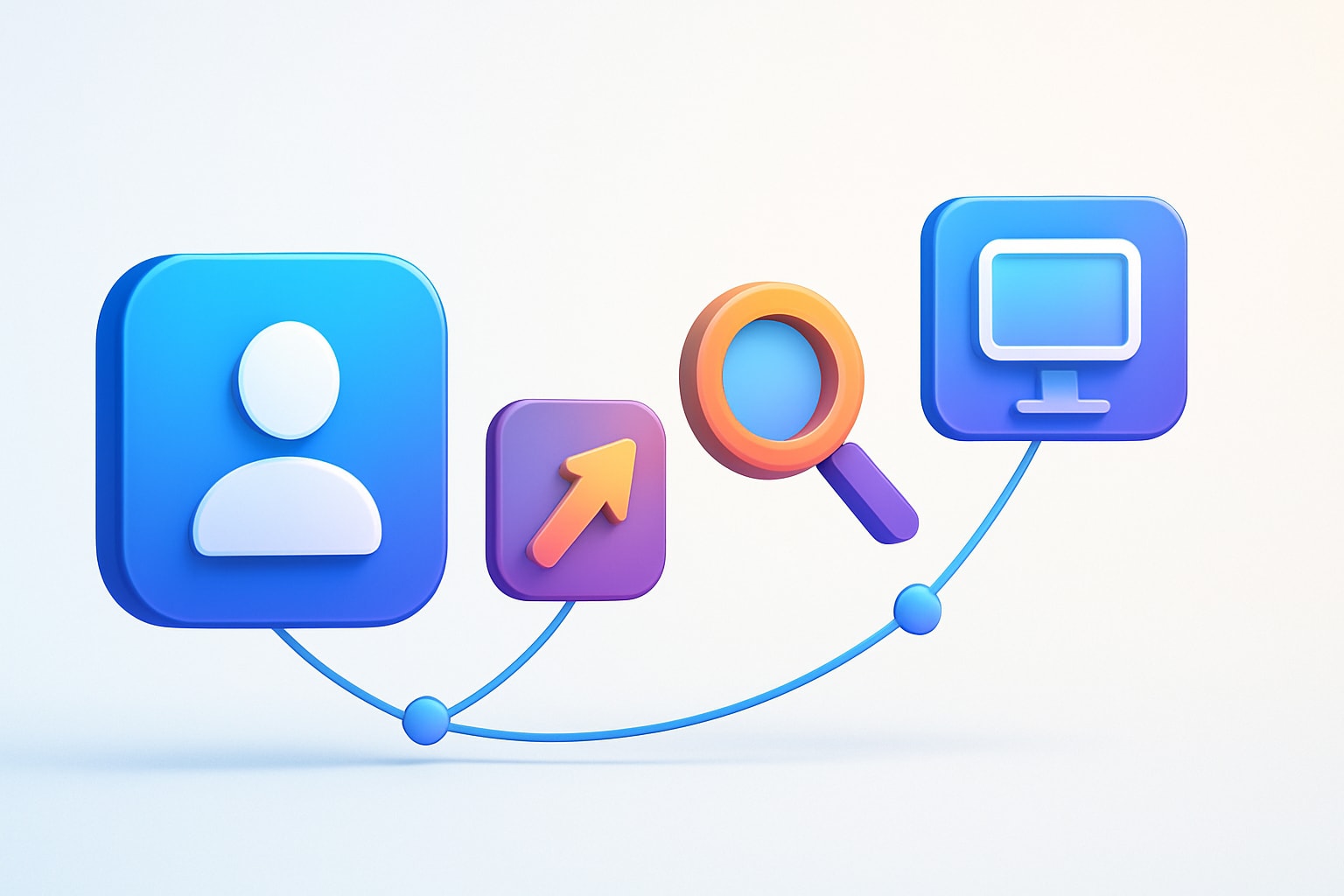
As 2025 draws near, the race to attract and hire top talent is fiercer than ever. Organizations are seeking smarter ways to stay ahead, and using top recruiting software is now essential for success.
With so many solutions available, choosing the right platform can feel overwhelming. This article highlights the 9 essential top recruiting software picks for 2025, breaking down their standout features, pricing, use cases, and unique benefits.
By the end, you will have the clarity and confidence to select the best tools to transform your hiring strategy and secure the best candidates before your competition.
The Evolving Landscape of Recruiting Technology in 2025
Recruiting is undergoing a remarkable transformation as we approach 2025. The days of manual processes and basic applicant tracking systems are fading quickly. In their place, organizations are adopting top recruiting software that harnesses innovation, data, and automation to stay ahead in the race for talent.
The rise of AI has fundamentally changed how companies identify, engage, and select candidates. Modern recruiting platforms now use machine learning algorithms for intelligent CV screening, automated candidate ranking, and predictive analytics. These advancements help hiring teams uncover the strongest applicants faster, reduce human error, and deliver consistent results. As a result, top recruiting software has become essential for organizations seeking both speed and accuracy in hiring.
Diversity, equity, and inclusion have also taken center stage in recruitment technology. Many platforms now offer features that reduce bias by anonymizing applications or flagging language that may perpetuate stereotypes. This shift is not just ethical, but practical, as diverse teams are proven to drive better business outcomes. Additionally, the widespread adoption of remote and hybrid work has prompted software vendors to enhance virtual interviewing tools, asynchronous assessments, and global compliance capabilities. Companies need flexible solutions that adapt to changing work models, and top recruiting software is rising to meet these demands.
Seamless integration is another critical factor shaping the evolution of recruiting technology. Businesses want software that connects effortlessly with their HR tech stacks, payroll systems, and communication tools. Mobile accessibility has become a non-negotiable, allowing hiring managers and candidates to interact anytime, anywhere. Advanced analytics dashboards are now standard, empowering leaders to track key metrics, identify bottlenecks, and continuously improve the hiring process.
Industry leaders are already leveraging these innovations to outperform competitors. For instance, global enterprises have reported significant reductions in time-to-hire and improved candidate quality after deploying top recruiting software. According to Talent Acquisition Software Market Trends, the U.S. talent acquisition software market reached an 85% share and $4.1 billion in revenue in 2024, fueled by AI integration and digital transformation initiatives. Projections indicate continued rapid growth, with more organizations prioritizing technology investments to maximize ROI.
The landscape of recruiting technology in 2025 is defined by agility, intelligence, and inclusivity. Companies that embrace these trends, empowered by top recruiting software, are best positioned to secure high-caliber talent and drive business success in an increasingly competitive environment.
9 Essential Top Recruiting Software Picks for 2025
Selecting the right top recruiting software is crucial to winning the talent race in 2025. Today’s solutions go beyond basic tracking, integrating intelligent automation, AI-powered analytics, and seamless workflows suited for hybrid workforces. The market is booming, with the Recruitment Automation Market Growth expected at a 13.5% CAGR through 2032, reflecting a shift toward smarter, more efficient hiring. Below, we spotlight the nine top recruiting software platforms reshaping talent acquisition for organizations of every size and industry.
Klearskill
Klearskill stands out as a top recruiting software choice for teams seeking precision and speed. Its AI-driven CV analysis and candidate ranking system can reduce screening time by up to 92 percent, helping recruiters focus on high-potential talent. The platform’s AI matching is customizable, enabling organizations to refine criteria and align hiring with business goals.

Deep candidate insights and visual hiring workflows give hiring managers a clear view of every stage. Seamless ATS integration ensures Klearskill fits into existing HR ecosystems without disruption. Startups benefit from free access, while all users can try the platform risk-free before committing.
Klearskill is ideal for startups, agencies, and high-volume hiring teams needing scalable and bias-free screening. Pros include high accuracy, automation, and a significant reduction in unconscious bias. The main cons are a necessary initial setup and a learning curve as teams adapt to new workflows. Still, for those prioritizing efficiency and fairness, this top recruiting software delivers measurable results.
Greenhouse
Greenhouse has become a leading name in top recruiting software for organizations focused on collaborative hiring and structured processes. Its interview kits standardize candidate evaluations, supporting fair and objective decisions. Robust analytics help teams uncover bottlenecks and optimize every stage of recruitment.
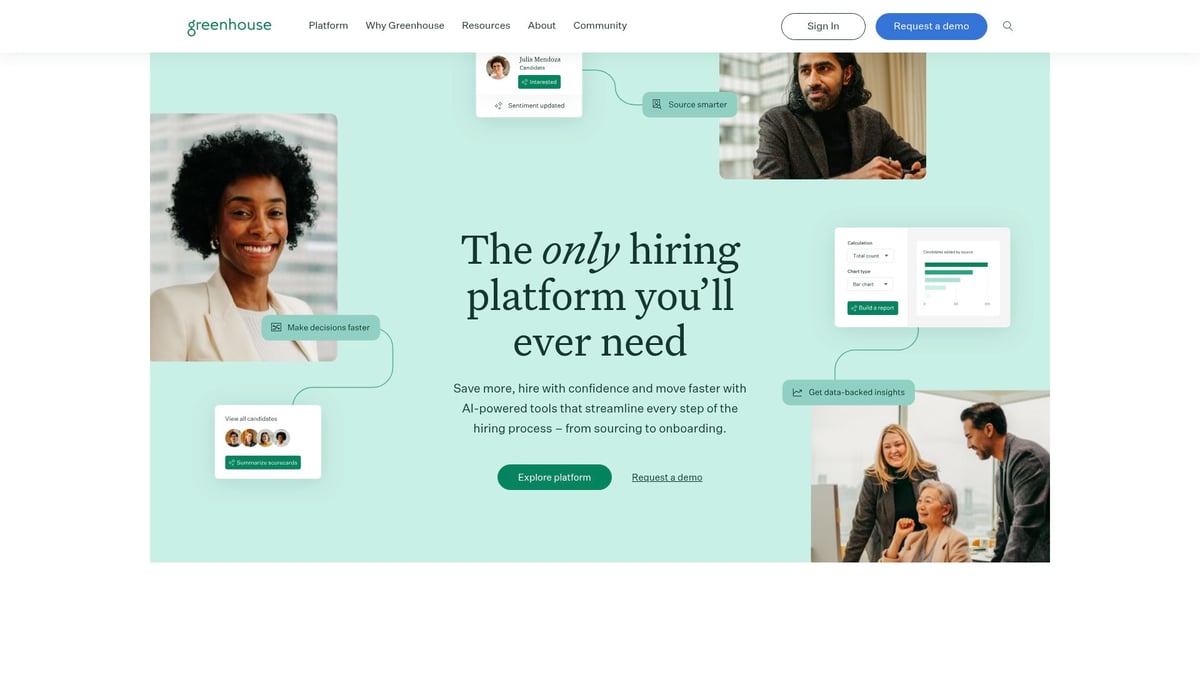
The platform’s integration ecosystem connects with hundreds of HR tools, making it adaptable for businesses from SMBs to large enterprises. Scalable pricing ensures flexibility as companies grow. Greenhouse’s DEI features promote inclusive hiring, while employer branding tools enhance candidate experience.
Tech firms and global enterprises rely on Greenhouse for its customization and advanced reporting. Pros are its user-friendly interface and deep analytics, which empower data-driven decisions. The primary con is a complex setup process that can be challenging for small teams with limited resources. For organizations determined to build structured, fair, and engaging hiring journeys, this top recruiting software is a worthwhile investment.
Lever
Lever uniquely combines a CRM and ATS in one top recruiting software platform. Its automation features streamline repetitive tasks, freeing recruiters to focus on relationship building and strategic outreach. Advanced reporting tools provide actionable insights for continuous improvement.
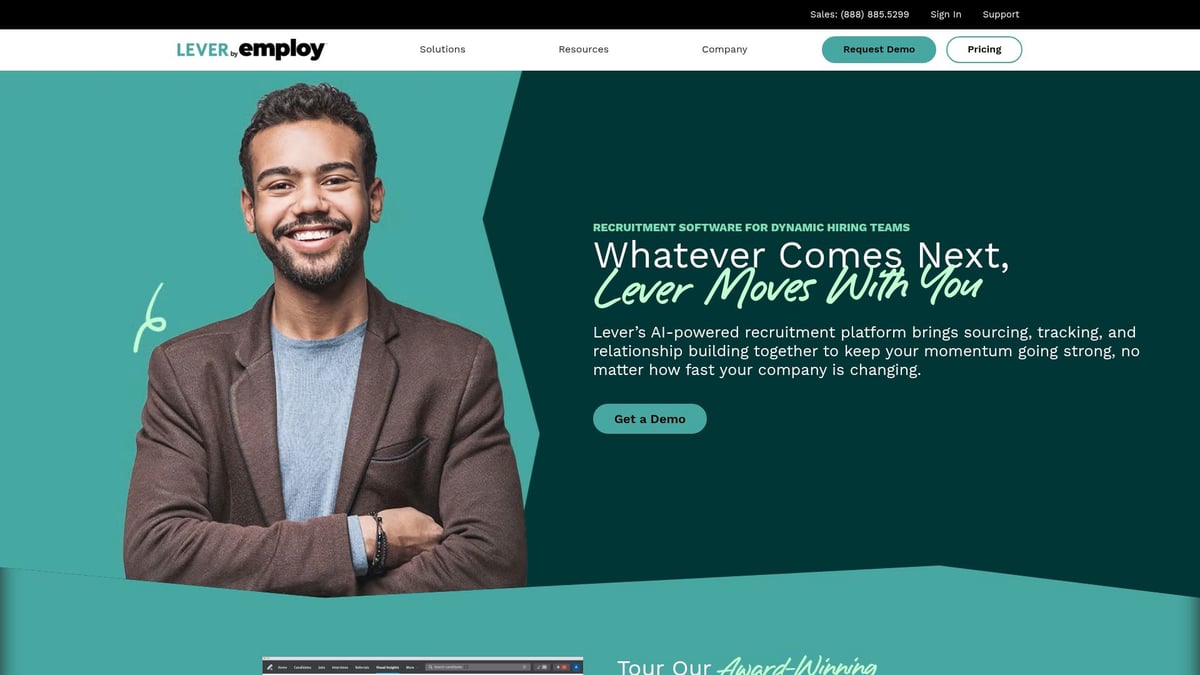
Pricing is tiered, catering to both startups and large organizations. Lever excels at nurturing passive talent, with pipelines designed for proactive recruitment. Its diversity recruiting tools help companies broaden their candidate pools and meet DEI goals.
This platform is best suited for organizations prioritizing long-term talent relationships and agile pipeline management. The intuitive interface is a standout pro, making it easy for teams to adapt. However, the cost of advanced features can be a drawback for smaller businesses. For those seeking a proactive, candidate-centric approach, Lever is a top recruiting software choice that supports sustainable growth.
Workable
Workable is a top recruiting software solution that emphasizes speed and flexibility. Its AI-powered sourcing tools locate qualified candidates faster, while one-click job posting reaches multiple channels instantly. Mobile recruiting capabilities allow hiring managers to review applications and communicate on the go.

Transparent pricing and flexible plans make Workable accessible to businesses of all sizes. Fast-growing companies and remote teams especially benefit from its quick onboarding and straightforward setup. The user interface is designed for ease of use, reducing the time needed for training.
While Workable’s lower-tier plans offer limited customization, its core features provide significant value. Pros include rapid implementation and strong support for distributed teams. The main con is that some advanced configurations are available only on higher plans. For companies seeking an agile, all-in-one top recruiting software, Workable is a reliable partner.
Breezy HR
Breezy HR is designed for simplicity and team collaboration, making it a favored top recruiting software among SMBs and remote-first organizations. Its drag-and-drop pipeline management simplifies tracking candidates through every hiring stage. Automated interview scheduling and candidate texting improve response rates and reduce time-to-hire.

Pricing is competitive, with a free trial available for new users. Breezy HR’s strong collaboration tools help teams stay aligned, regardless of location. The platform integrates with popular job boards and HR systems, supporting a seamless workflow.
Pros are the intuitive interface and effective communication features, which enhance candidate engagement. However, it offers fewer advanced analytics compared to some larger platforms. For businesses seeking a straightforward, affordable top recruiting software that prioritizes team efficiency, Breezy HR delivers.
SmartRecruiters
SmartRecruiters offers a comprehensive suite for enterprise hiring, cementing its status as a top recruiting software for global organizations and agencies. Its marketplace integrations provide access to a wide range of HR tools and services. The collaborative hiring suite encourages input from all stakeholders, improving decision-making and candidate fit.
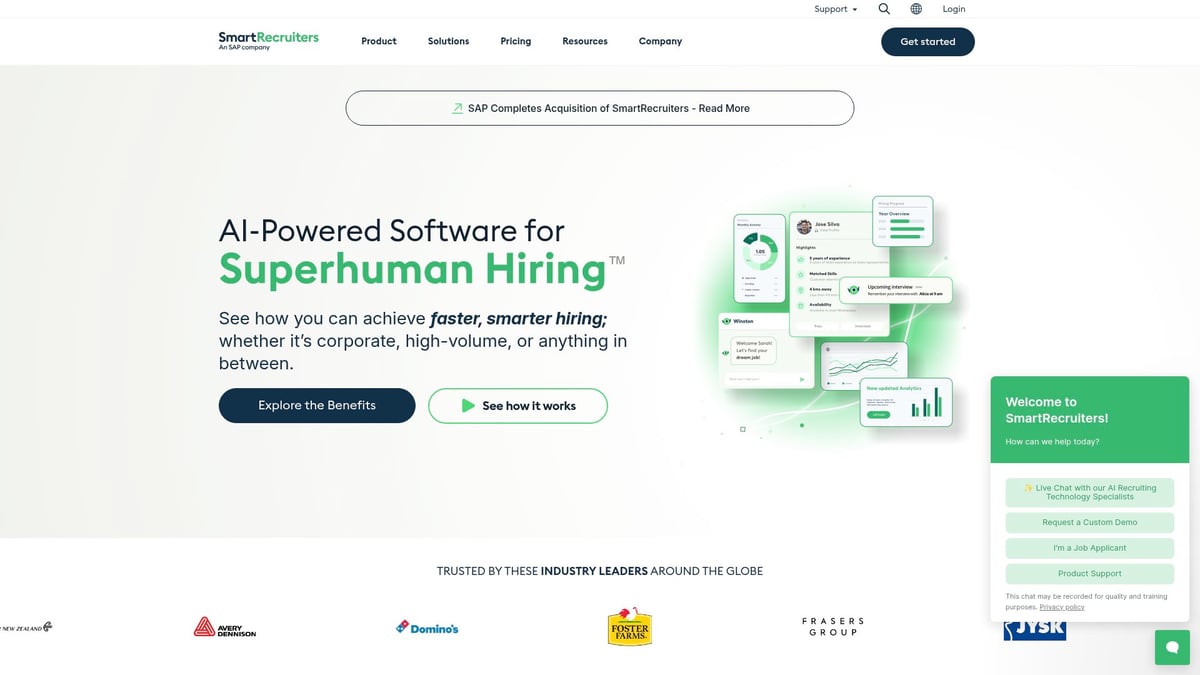
The platform is mobile-friendly, allowing users to manage recruitment activities from anywhere. Transparent pricing models cater to companies of varying sizes. SmartRecruiters excels in scalability, accommodating complex hiring needs across multiple locations.
Pros include robust integration capabilities and the flexibility to customize workflows. The primary con is a steep learning curve for teams managing intricate setups. For enterprises needing a scalable, connected top recruiting software solution, SmartRecruiters is a strong contender.
iCIMS Talent Cloud
iCIMS Talent Cloud is a versatile top recruiting software built for end-to-end talent acquisition. Its AI-powered candidate matching identifies the best fit for each role, while a comprehensive analytics dashboard enables data-driven decision-making. Compliance features and strong integration support make it suitable for highly regulated industries.
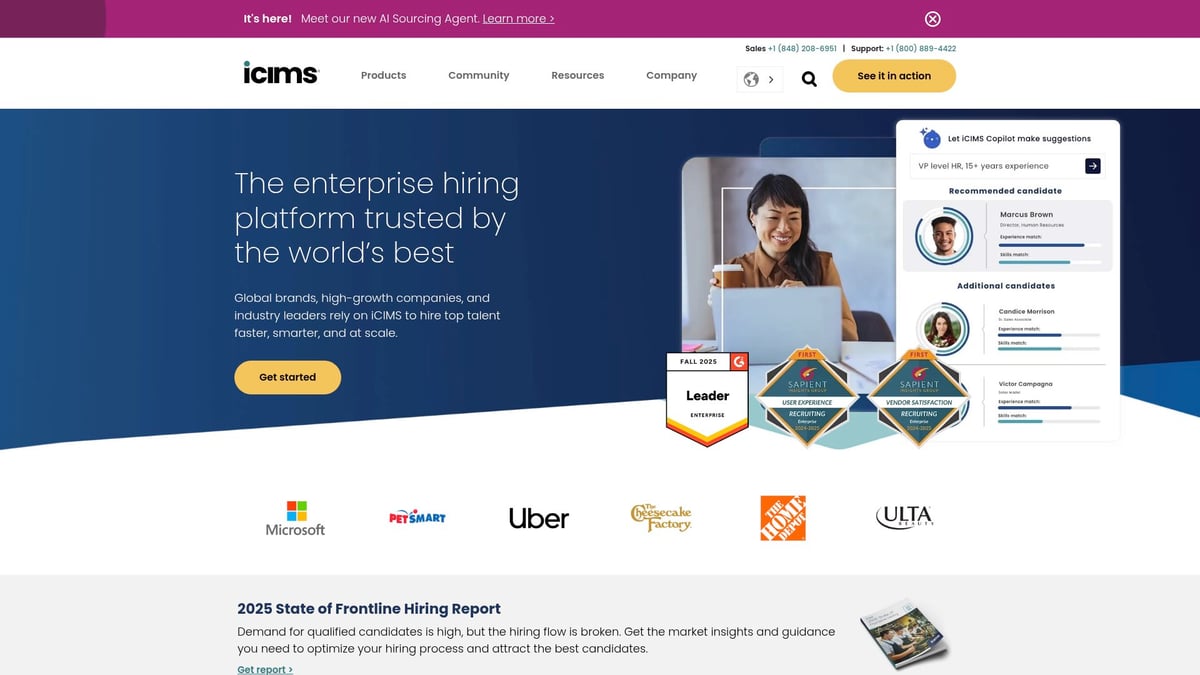
Pricing is available by quote, reflecting the platform’s tailored approach. Large enterprises benefit from iCIMS’ scalability and ability to handle complex hiring requirements. The onboarding process requires an initial investment in training, but the depth of features justifies the effort.
Pros are the extensive customization options and robust compliance tools. The main con is the learning curve associated with its advanced capabilities. For organizations that demand reliability, security, and top recruiting software performance, iCIMS delivers a powerful solution.
JazzHR
JazzHR targets small and mid-sized businesses with a user-friendly, affordable top recruiting software solution. Customizable workflows allow teams to adapt the platform to their unique processes. Unlimited users and robust job syndication help employers reach diverse candidate pools.
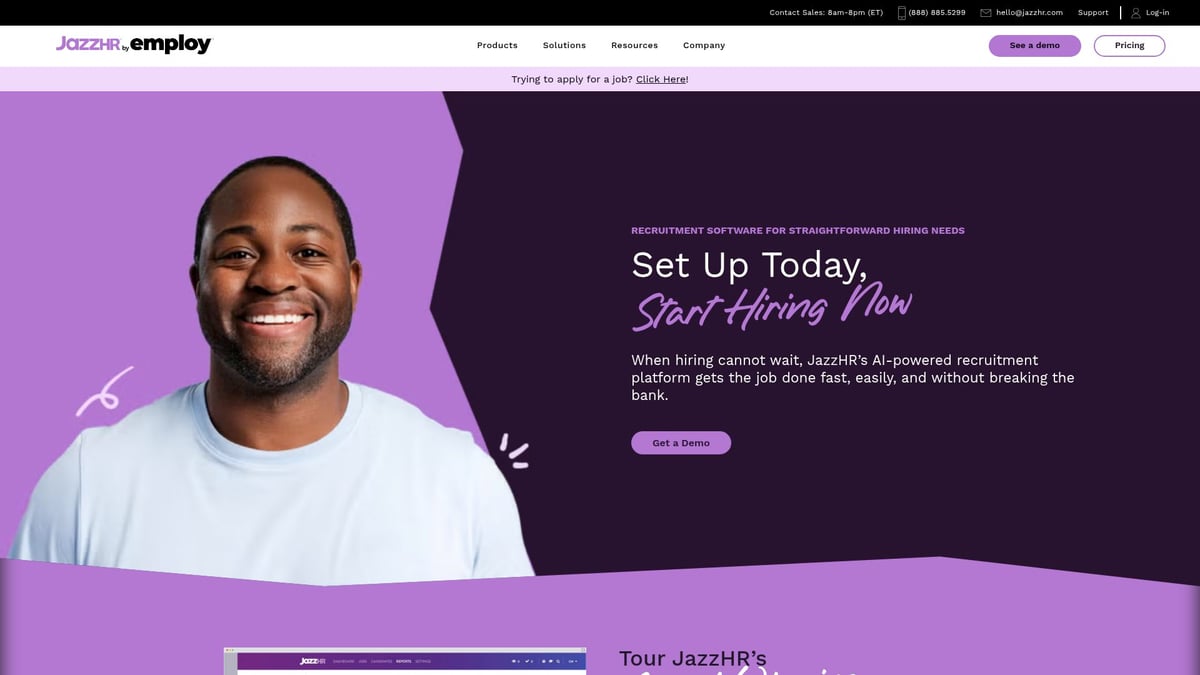
Pricing is transparent and budget-friendly, making JazzHR accessible for organizations with limited resources. Implementation is quick, and the support team is responsive, ensuring a smooth transition. The platform integrates with common HR tools, simplifying data management.
The main pros are excellent value for money and easy setup. However, JazzHR has fewer features tailored for large-scale or enterprise hiring. For SMBs looking for an effective, budget-conscious top recruiting software, JazzHR is an excellent choice.
Jobvite
Jobvite rounds out our list of top recruiting software with a focus on recruitment marketing and employer branding. Its modular platform includes CRM, onboarding, and advanced automation to nurture candidates through every stage. Social recruiting features help companies attract talent via branded campaigns.

Pricing is modular, allowing organizations to select only the features they need. Jobvite’s marketing automation tools set it apart, enabling personalized outreach that resonates with today’s candidates. The platform is particularly effective for brands seeking to enhance their image and expand reach.
Pros include powerful marketing integrations and scalable functionality. The main con is potential complexity for smaller teams unfamiliar with modular systems. For businesses prioritizing employer branding and candidate engagement, Jobvite is a leading top recruiting software solution.
How to Evaluate and Choose the Right Recruiting Software for Your Organization
Choosing the right top recruiting software is a strategic decision that can transform your hiring outcomes. As organizations face increased competition for talent, the need to align software solutions with specific business goals has never been more urgent. Start by clearly defining your hiring objectives, such as improving diversity, automating workflows, or enhancing candidate experience.
Begin with a thorough needs assessment that accounts for your team size, hiring volume, and current pain points. Prioritize features that address your unique requirements, whether you need advanced analytics, mobile accessibility, or deep integration with your HR tech stack. Request demos from shortlisted providers to see how each platform supports your goals and fits into your existing processes.
Evaluating top recruiting software also involves understanding the impact of innovative technologies. For example, AI-powered tools can reduce bias and accelerate screening, as highlighted in AI's Impact on Recruitment Efficiency. This evidence supports prioritizing platforms that leverage automation and data-driven insights for better results.
Calculate the potential ROI by comparing expected improvements in time-to-hire, candidate quality, and recruiter productivity against licensing and implementation costs. Engage stakeholders from HR, IT, and leadership early to ensure buy-in and smooth adoption. Encourage team feedback during trials, and consider testimonials or case studies from organizations that have successfully adopted new recruiting platforms.
Adoption and change management are critical. Invest in user training and ongoing support to maximize the value of your top recruiting software. Monitor KPIs to track improvements and refine your processes based on real data.
Key Evaluation Criteria and Questions to Ask
Identifying the best top recruiting software requires a structured approach to criteria. Scalability should match your anticipated growth, while a user-friendly interface ensures quick onboarding and high adoption rates. Reliable customer support can make a significant difference during implementation and daily use.
Analytics and reporting capabilities are essential for measuring hiring effectiveness and identifying areas for improvement. Compliance features help you meet legal and industry standards, especially if you operate in regulated sectors or across borders.
Ask vendors about customization options to tailor the platform to your workflows. Data security is another priority, so inquire about encryption, access controls, and compliance certifications. Understanding the vendor’s product roadmap reveals their commitment to innovation and ongoing value.
For example, a growing tech company might select top recruiting software with robust automation and analytics, resulting in a measurable reduction in time-to-hire. In contrast, a multinational enterprise may prioritize integrations and compliance to handle complex, global requirements.
By focusing on these criteria and asking the right questions, you can ensure your investment in top recruiting software delivers lasting value and supports your organizational goals.
Maximizing ROI and Success with Recruiting Software in 2025
Maximizing ROI with top recruiting software requires more than just implementation. The global recruitment industry is valued at approximately $475 billion, highlighting the massive potential impact of optimizing hiring processes with the right technology. By leveraging the capabilities of top recruiting software, organizations can transform their talent acquisition function into a strategic advantage. As the competition for skilled talent intensifies, using data-driven tools becomes essential for long-term success. For a deeper understanding of the sector's economic impact, see the Global Recruitment Industry Valuation.
To fully realize the benefits of top recruiting software, organizations must focus on driving user adoption and optimizing workflows. Start by providing comprehensive training to all stakeholders, ensuring recruiters and hiring managers understand every feature. Set measurable goals, such as reducing time-to-hire or increasing candidate satisfaction scores, and monitor these metrics consistently. Regularly review and refine workflows to eliminate bottlenecks and adapt to evolving business needs. Engaging your team early in the process, gathering feedback, and celebrating quick wins can accelerate adoption and foster a culture of continuous improvement.
Analytics play a critical role in maximizing the impact of top recruiting software. Use built-in dashboards to track performance metrics like source effectiveness, candidate quality, and diversity progress. Look for tools that offer AI-driven bias reduction and personalized candidate engagement, as these best practices are shaping the future of recruitment in 2025. Companies that embrace these strategies have reported significant reductions in time-to-hire and notable improvements in candidate quality. By aligning software capabilities with organizational objectives, you can ensure ongoing ROI and position your hiring strategy for future success.
